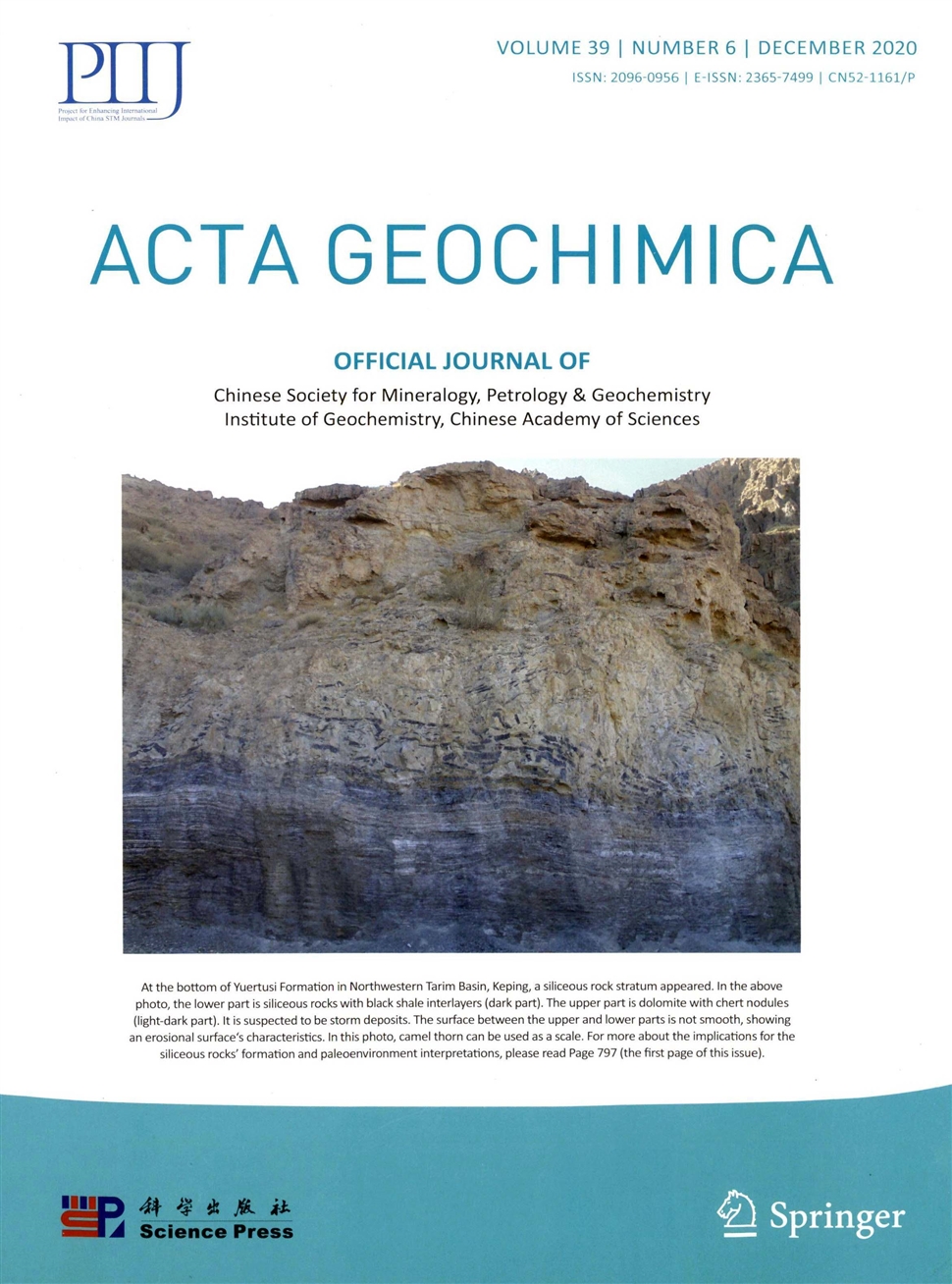REE geochemistry of gangue minerals and their geological significance in the Muli antimony ore deposit in Yunnan,China
作者:Zhenchun Han,Jiasheng Wang,Chao Li,Kaidi Qiao,Jinyang Chang
摘要:The Muli antimony deposit is located in the AuSb polymetallic metallogenic belt in south-eastern Yunnan,China.In this paper,we investigated the concentrations of trace elements in gangue minerals,mainly calcite,quartz,and pyrite,which were formed at different metallogenic stages.Meanwhile,the host rocks,predominantly composed of limestone,are also analysed for comparison.The calcite from the Nadan ore section is enriched with medium-heavy rare earth elements(M-HREEs),likely due to the presence of a high concentration of Fe and Mn impurities,which results in the preferential enrichment of M-HREEs in the calcite.Alternatively,the calcite may be precipitated from the M-HREE-rich granitic leaching fluid.In the Muli ore section,both quartz and pyrite in the metallogenic period show enrichment with light rare earth elements(LREEs),and the wall rock is also enriched with LREEs,which indicates that the wall rock material was involved in the metallogenic process.The W-shaped tetrad effect of quartz in the late metallogenic stage was interpreted to determine extensive fluid-rock interactions in highly fractionated Si-rich systems.Fe and Mn impurities cause M-HREE to be preferentially enriched with calcite to some extent.Whether mineralization is related to granite deserves further study.Eu and Ce anomalies of different types of gangue minerals indicate that the temperature and the f02 were constantly changing during mineralization,and the temperature of the main ore-stage was higher than200℃in an oxidized state.The various REE patterns,LREE/HREE and(La/Yb)N values,reveal that there may be multi-sources and multi-stage hydrothermal activities in the Muli antimony deposit.The REE distribution patterns of minerals are likely interfered with by many internal and external factors.Studies on REE characteristics of calcite,quartz,pyrite and limestone in the Muli antimony deposit have greatly improved the understanding of ore-forming fluids.When we traced the origin and evolution of oreforming fluids by means of mineral REE dist
发文机构:Southwest Institute of Geological Survey National Research Center for Geoanalysis
关键词:MuliANTIMONYdepositORE-FORMINGfluidsREECALCITEPyrite-Quartz
分类号: P61[天文地球—矿床学][天文地球—地质学]
- Exposure of children to heavy metals from artisanal gold mining in Nigeria:evidences from bio-monitoring of hairs and nails
- Groundwater quality assessment using multivariate analysis,geostatistical modeling,and water quality index(WQI):a case of study in the Boumerzoug-El Khroub valley of Northeast Algeria
- Geochemical assessment,mixing behavior and environmental impact of thermal waters in the Guelma geothermal system,Algeria
- Isotherm and kinetic studies on the adsorption of humic acid molecular size fractions onto clay minerals
- REE geochemistry of core sediments of Cauvery delta,India for provenance studies
- Geochemical characterization of Granitoids in Katchuan Irruan area:further evidence for peraluminous and shoshonitic compositions and post-collisional setting of granitic rocks in the Precambrian Basement Complex of Nigeria
- The occurrences and geochemical characteristics of thorium in iron ore in the Bayan Obo deposit,Northern China
- Fluid inclusion and H-O isotope study of the Jiguanshan porphyry Mo deposit,Xilamulun Metallogenic Belt:implications for characteristics and evolution of ore-forming fluids
- Development of a 100 MPa water–gas two-phase fluid pressurization device
- Studying DDTs in agricultural soils of selected rural communities of Armenia


